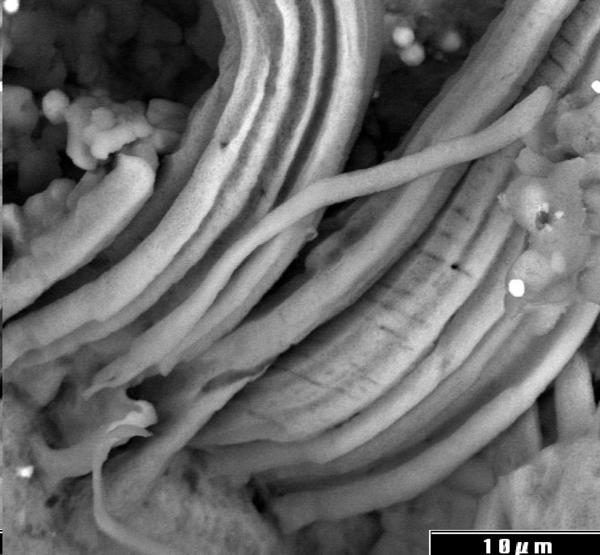Microfossils in Meteorites: Implications to the Origin and Distribution of Life
Prof. Dr. Richard B. Hoover
D.Sc., h.c. (RAS) NASA/MSFC/National Space Science and Technology Center.
Emeritus United States Space & Rocket Center
Astrobiology Laboratory Director One Tranquility Base
Huntsville, Alabama, USA, 35805
Villa Magliola seminars room
INAF-OATo
LIVE STREAMING
Abstract
The Origin of Life on Earth is one of the great mysteries of Science.
Enormous effort has been expended by great scientific minds – but where, when and how life originated remains unresolved questions.
Enormous effort has been expended by great scientific minds – but where, when and how life originated remains unresolved questions.
Chemical biomarkers and microfossils in ancient rocks indicate life appeared on Earth ~ 3.8 – 4.2 Ga.
This was so soon after the formation of the Solar System that there was no long period for the pre-biotic formation of complex biomolecules and evolution into protocells prior to the emergence of life on Earth.
This was so soon after the formation of the Solar System that there was no long period for the pre-biotic formation of complex biomolecules and evolution into protocells prior to the emergence of life on Earth.
Could life have originated on an ancient exoplanet and been transported as intact biospheres to early Earth by interstellar comets or rogue planets?
If so, the widely accepted paradigm of the endogenous origin of life on Earth may be invalid.
Scanning Electron Microscopy (SEM) studies carried out in 1997 at NASA/MSFC (USA), Paleontological Institute (RAS) resulted in the independent discovery of recognizable microfossils in Carbonaceous Meteorites.
If so, the widely accepted paradigm of the endogenous origin of life on Earth may be invalid.
Scanning Electron Microscopy (SEM) studies carried out in 1997 at NASA/MSFC (USA), Paleontological Institute (RAS) resulted in the independent discovery of recognizable microfossils in Carbonaceous Meteorites.
The remains of diatoms, cyanobacteria and other marine microbiota have been found embedded in freshly fractured interior surfaces of the Orgueil (CI1 – 1864), Murchison (CM2 – 1969) carbonaceous meteorites.
The extremely low density (0.6 to 0.8 g/cm3) Polonnaruwa (C-Ung.) that were observed to fall in Sri Lanka on Dec. 29, 2012 contain astonishingly well-preserved diatoms, cyanobacteria and exotic unidentified biogenic remains.
The extremely low density (0.6 to 0.8 g/cm3) Polonnaruwa (C-Ung.) that were observed to fall in Sri Lanka on Dec. 29, 2012 contain astonishingly well-preserved diatoms, cyanobacteria and exotic unidentified biogenic remains.
Neutron Activation Analysis (NAA) studies of these stones at JINR in Russia show these stones have high levels of long-lived radiogenic Heat-Producing Elements (HPE’s – 40K, 1.2 Ga, 238U, 4.5 Ga, 232Th,14.2 Ga) that are responsible for >90% of heat flow through the Earth’s surface.
These HPE’s could maintain water in liquid state in sub crustal regimes of Pluto, icy moons and escaped planets for periods far greater than the 4.5 Ga age of our Solar System.
High-resolution SEM images of diatoms and cyanobacteria in Orgueil and other meteorites will be shown along with Energy Dispersive X-Ray Spectroscopy (EDS) spot data will be presented as evidence for indigenous microfossils in carbonaceous meteorites as direct observational evidence for the existence of extra-terrestrial life.
These HPE’s could maintain water in liquid state in sub crustal regimes of Pluto, icy moons and escaped planets for periods far greater than the 4.5 Ga age of our Solar System.
High-resolution SEM images of diatoms and cyanobacteria in Orgueil and other meteorites will be shown along with Energy Dispersive X-Ray Spectroscopy (EDS) spot data will be presented as evidence for indigenous microfossils in carbonaceous meteorites as direct observational evidence for the existence of extra-terrestrial life.
These results challenge the paradigm that life on Earth originated on Earth.
A novel “Wet Panspermia” hypothesis will be advanced as a mechanism for the delivery to the primordial Earth of living microorganisms and intact Biospheres rather than just pre-biotic organic molecules.
Long-lived HPE’s could provide energy for biological metabolism and maintain oceans (no tidal forces from nearby Gas Giants) beneath the crusts of icy moons, free-floating planets or interstellar comets during the long transit times from ancient star systems (e.g. Kapteyn’s Star, 11 Ga); globular clusters (M92, 14.2 Ga) or nearby galaxies.
A novel “Wet Panspermia” hypothesis will be advanced as a mechanism for the delivery to the primordial Earth of living microorganisms and intact Biospheres rather than just pre-biotic organic molecules.
Long-lived HPE’s could provide energy for biological metabolism and maintain oceans (no tidal forces from nearby Gas Giants) beneath the crusts of icy moons, free-floating planets or interstellar comets during the long transit times from ancient star systems (e.g. Kapteyn’s Star, 11 Ga); globular clusters (M92, 14.2 Ga) or nearby galaxies.
Icy crusts insulate and protect subsurface oceans and HPE’s provide the energy source for sub-crustal, icy Biospheres to live, grow; replicate, evolve, die and fossilize during long transit until capture and bio-contamination of planets. Moons and comets of our solar system.

Microfossils in Orgueil; photo by Richard B. Hoover, NASA/NSSTC, 21-23 July 2004; sample courtesy of Paul Sipiera, the Dupont Meteorite Collection of the Planetary Studies Foundation.

